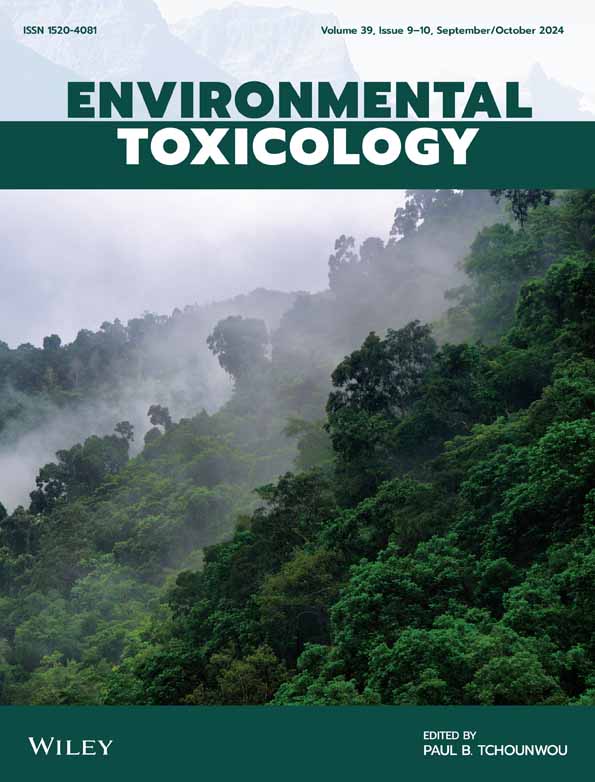Ecotoxicological Evaluation of Organic Sunscreens Used Worldwide, Alone and in Mixture, on Terrestrial Plants
IF 3.2
3区 医学
Q2 ENVIRONMENTAL SCIENCES
引用次数: 0
Abstract
The environmental hazards of sunscreens are discussed worldwide. However, there are few ecotoxicological studies on these compounds alone for edaphic organisms, and none for their mixtures. Avobenzone (1 and 10 ng/L), octocrylene (10 and 100 μg/L), and oxybenzone (2 and 20 μg/L), alone and in binary combinations (between the lowest and the highest concentrations), were evaluated for phytotoxicity to the roots of rustic varieties of世界范围内单独和混合使用的有机防晒霜对陆生植物的生态毒理学评价
世界范围内都在讨论防晒霜对环境的危害。然而,对这些化合物单独对土壤生物的生态毒理学研究很少,对它们的混合物的生态毒理学研究也很少。研究了阿伏苯宗(1和10 ng/L)、八烯丙烯(10和100 μg/L)和氧苯宗(2和20 μg/L)单独和二元组合(最低浓度和最高浓度之间)对乡土品种胡萝卜(Daucus carota)和番茄茄(Solanum lycopersicum)根系的植物毒性,以及对洋葱(Allium cepa bulbs)根系的细胞毒性和遗传毒性。与较高浓度的防晒霜相比,较低浓度的防晒霜尽管增加了细胞中的超氧化物和羟基自由基,但没有引起根的长度变化,因为它们不影响细胞的伸长。在混合物中,较低的浓度在根中引起协同相互作用,而较高的浓度没有超过单独过滤器的毒性。在鳞茎中,单独使用和混合使用滤液抑制了细胞分裂和分生组织中有丝分裂纺锤体的改变,这主要是由于细胞中H2O2的积累,并且混合物在根中引发了协同相互作用。其中,阿伏苯宗与氧苯宗的混合物危害较大,其最易被根系吸收,具有最大的植物毒性和细胞毒性;但环境稳定性不高。与八烯的环境稳定混合物吸收最少,但危害很大,对植物具有植物毒性和细胞遗传毒性。因此,在作物土壤上使用污水污泥和废水对农业生产力和环境构成风险。
本文章由计算机程序翻译,如有差异,请以英文原文为准。
求助全文
约1分钟内获得全文
求助全文
来源期刊

Environmental Toxicology
环境科学-毒理学
CiteScore
7.10
自引率
8.90%
发文量
261
审稿时长
4.5 months
期刊介绍:
The journal publishes in the areas of toxicity and toxicology of environmental pollutants in air, dust, sediment, soil and water, and natural toxins in the environment.Of particular interest are:
Toxic or biologically disruptive impacts of anthropogenic chemicals such as pharmaceuticals, industrial organics, agricultural chemicals, and by-products such as chlorinated compounds from water disinfection and waste incineration;
Natural toxins and their impacts;
Biotransformation and metabolism of toxigenic compounds, food chains for toxin accumulation or biodegradation;
Assays of toxicity, endocrine disruption, mutagenicity, carcinogenicity, ecosystem impact and health hazard;
Environmental and public health risk assessment, environmental guidelines, environmental policy for toxicants.
 求助内容:
求助内容: 应助结果提醒方式:
应助结果提醒方式:


